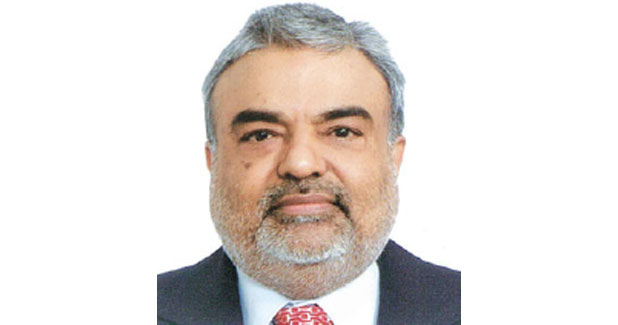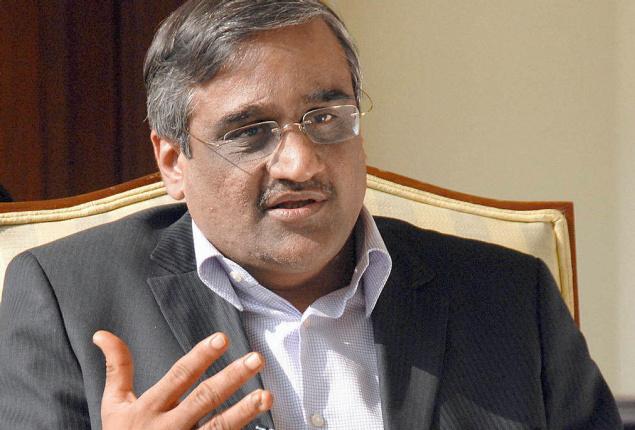FW
Vietnam has invited Indian investment in its apparel production. Since Vietnam joined the Trans-Pacific-Partnership agreement, Indian apparel firms that invest and run their production in Vietnam can enter leading markets such as the US, the EU, Japan and Canada with a zero tariff.
Vietnam has highlighted favorable conditions for investment such as a convenient infrastructure, competitive labor costs, central and local incentives to stimulate investment on land leasing, and tariffs. In addition the country has committed to reforms and projects the social environment in the country as friendly.
To bolster bilateral cooperation in the sector, India has offered a $300 million preferential credit for its business projects in apparel in Vietnam within a decade. However, while an opportunity has come to shift investments to Vietnam, not just for garment but even for textile companies, Vietnam doesn’t grow cotton and needs textile items for making garments. Not many Indian firms will be able to seize the moment.
To set up a decent-sized textile or garment unit in Vietnam, and gain from the duty advantage, a company needs to invest at least Rs 1,000 crores. In an atmosphere of a global slowdown, a massive liquidity crunch and stressed balance sheets, it’s not possible for many Indian companies to move out immediately and invest.
Indorama Ventures (IVL), Thailand and India’s Dhunseri Petrochem (Dhunseri) have agreed to enter into a 50:50 joint venture (JV) to manufacture and sell polyester (PET) resins for Indian domestic markets and for exports. Dhunseri will purchase a 50-per cent stake in the 216,000 ton Micro Polypet (MicroPet), a company owned by Indorama Ventures in, Haryana. IVL in turn will acquire a 50-per cent stake in a carved out entity, called Haldia, of Dhunseri, with an effective capacity of 480,000 tonnes PET manufacturing located in West Bengal. The JV is subject to regulatory approvals and expected to complete in H2 2016.
In India, PET usage per head is just 0.6 kg per annum compared to 2.6 kg per annum in China and 10.9 kg per annum in the United States. This JV is a win-win situation for both the producers with 700,000 ton per annum of combined capacity in the strongest growth market having a population in excess of a billion people, as well as having favorable trade agreements with logistically advantaged countries in the region. The JV will gain significant synergy benefits being the sole producer of PET resin in North and East India and with both sites being effectively integrated with third party PTA suppliers, which will bring savings in SG&A and procurement. IVL’s global market reach and high utilisation rates are expected to supplement Haldia’s location benefit at Eastern India’s largest port while micropet enjoys a strong location advantage in the high-demand territory of North India.
Bangladesh’s Ready Made Garments (RMG) sector, the biggest earner of foreign currency for the country after the agricultural sector, may face an uncertainty in its exports to the US as a result of the signing of a bill opposing import of goods produced by forced labour by US President Barack Obama. The US government lists garment products from Bangladesh among goods that are produced by child or forced labour, although there was no official remark on whether Bangladeshi goods would be affected by the restrictions. According to the new law, shipments derived from slavery will be kept out of the country that closes a legal loophole that allowed import of such goods if US demand exceeded domestic production.
Senior commerce secretary Hedayetullah Al Mamoon said that there was no scope to include Bangladesh in the provision of forced labour or workers’ abuse, as ‘forced labour is completely banned by the constitution and there is no such abuse of women in the country.’ He added that an official statement would be made after a US statement reaches the Bangladeshi government and discussions are held with authorities concerned following a review.
Meanwhile, BGMEA President Siddiqur Rahman said that there was no slavery, child labour, forced labour or abuse of RMG women workers in Bangladesh. He claimed that such allegations of forced labour were totally absent in other industrial sectors too.
The EU will give Swaziland duty-free access to 9,600 products, including textiles, by October. This is a permanent trade agreement. It will help Swaziland become more competitive and attractive to investors who would be looking at accessing the lucrative EU market. Swaziland’s textile industry hopes to regain its vibrancy that was impaired due to the loss of African Growth and Opportunity Act (AGOA) almost two years ago. The loss of AGOA benefits restricted possibilities for diversifying agro-food sector exports.
Swaziland began benefiting from the AGOA program in 2001 when it voluntarily accepted the eligibility criteria, which included respect for the rule of law, poverty reduction, combating corruption, respect for workers’ rights and human rights, child labor protection and market openness. However, the country was struck off the AGOA list when it failed to meet the benchmarks.
Textiles have become a key player in Swaziland's otherwise moribund manufacturing sector. Swaziland's textile industry is dominated by garment-making factories owned by Taiwanese immigrants who came to Swaziland to take advantage of preferential trade conditions with the US under the African Growth and Opportunity Act, creating tens of thousands of employment opportunities. But with the loss of AGOA many of these Taiwanese companies lost interest in having Swaziland as a base.
Despite a 5.01 per cent increase in export turnover, and a 3.21 per cent rise in total goods exported in comparison with 2014, Vietnam’s shipments only occupied 3.45 per cent of the textile market share in the European Union last year. Cambodia’s market share was 3.64 per cent in the EU, 0.19 per cent higher than Vietnam’s. In 2015, the EU imported $3.11 billion worth of apparel from Vietnam, and products from Cambodia accounted for $3.27 billion.
So, although Vietnam was ranked among the top 10 in apparel exports to the European Union in 2015, it was outperformed by Cambodia. In January-February this year, Vietnam’s total garment and textile export turnover topped $3.6 billion, 12.4 per cent higher than the same period in 2015. Despite this, most Vietnamese exporters said their unit price tended to level off while some even had to lower their rate by 0.5 to one per cent.
The average unit price of Cambodian garments and textiles was lower than that of 2014. In the EU region, China led the board with 36.9 per cent, followed by Bangladesh, Turkey, India, Cambodia, and Vietnam, with 16.89, 11.62, 6.33, 3.64, and 3.45 per cent respectively.
Indian garment companies may get an interest subvention of 3.5 per cent on working capital loans. Borrowing working capital at high interest rates keeps product prices up, resulting in lowering India’s competitiveness in the world market. The high cost of finance has been a major barrier for the growth of the textile sector. Interest subvention will make India’s products competitive vis-à-vis products of other countries such as Bangladesh and Vietnam where textile players can avail of capital at much lower interest rates than those in India.
It’s estimated that the average interest rate on working capital is between 10.5 and11 per cent. When the Technology Upgradation Fund Scheme was introduced in the early ’90s, the average interest rate on working capital was offered at three per cent, which brought lots of investment into the textile sector. But now that the interest rate has surged to around 11 per cent, debt servicing has got difficult.
The textile sector contributes nearly seven per cent to India’s gross domestic product, and 13 per cent to merchandised exports. Only about $40 billion of textiles a year have been supplied by India to the global market over the past several years. In fact, this year, world textile imports are expected to decline mostly because of the global economic slowdown.
India has the largest area under cotton cultivation in the world, covering 12.7 million hectares of cultivated land, which constitute about 37 per cent of the total area under cotton in the world. The country is currently the world’s second largest exporter. However, it’s estimated that cotton production in India will fall by over seven per cent for the October 2015-September 2016 crop year.
This year, India will produce about three million bales less than last year. India will produce 35.3 million bales this year. A striking point is that this season India has an opening stock of 7.36 million bales as against 5.39 million bales in the last season that began in October of 2014. This year, as mill consumption is expected to remain at the same level, less production this year will somewhat offset the excess opening stock. Despite a drop in production, cotton prices have been in a bear grip owing to higher carryover stocks. Indian cotton prices, since the beginning of 2016, have fallen three per cent compared with over nine per cent correction in international prices. Prices in India are finding support on the back of rising exports.
Cotton prices in the international market have also crashed to a level not seen since August 2009. The fall is due to widespread fears that China, which has been a net big importer, will soon start selling cotton from reserves, depressing prices the world over.
India has already exported about 40 lakh bales of cotton so far this year, of which 20 lakh bales were shipped to Pakistan. Pakistan is buying more cotton than expected from India after floods cut its own crop to the smallest in over a decade. Cotton production in the next season (October 2016 to September 2017) may see an uptick and could reach about 38 million bales. The market will also see an uptick in the next season with price expected to be about Rs 34,000 to Rs 35,000 per candy.
India’s denim industry is growing at a compound annual growth rate of 15 to 18 per cent. Currently, feasible production capacity in India is a billion meters per annum considering a 85 to 90 per cent utilisation. Looking at the domestic demand, India will need to double its denim capacity in the next four to five years. India is one of the largest producers of denim. The Indian denim industry should ensure it bags orders not just for the domestic market but also that it becomes a global hub for branded denim apparel.
The industry is looking to increase its share of exports from the current 35 per cent to 45 per cent. Historically, denim has been one of the fastest growing apparel fabric segments, having grown by 500 million meters from 700 million meters in 2010 to 1.2 billion meters in 2015. Yet, there is a gap of another 300 million meters in India if the denim industry needs to tap its full export potential.
Gujarat is set to strengthen its position further as the denim hub of India with around 150 million meters per annum new manufacturing capacity added by 2020. This will be in addition to the existing capacity of 500 million meters per annum.
Apparel Sourcing Show will be held in Canada from August 22 to 24, 2016. The show will allow Canada to have better trade platform for the apparel industry and find better ways to source its products. Canada’s retailers will be able to connect with major apparel and textile manufacturers from around the world. Many countries will be represented, including, of course, China, as well as Bangladesh, Mexico, the United States, India, Vietnam, Taiwan, Indonesia, Mauritius, Guatemala, Colombia, Jordan, Honduras, Myanmar, Burma, and Peru.
The expo will feature international textile producers, and offer a series of seminars on trade and textiles, from the Trans-Pacific Partnership to how to choose the best overseas producers to work with. Established over 150 years ago, in small, urban communities that offered a stable labor supply and rivers ideally suited for water-generated power and dyeing or finishing processes, the Canadian textile industry started with the manufacture of yarns and fabrics from natural fibers.
The industry is heavily capital-intensive, uses natural, artificial and manmade fibers and filaments, and supplies a wide range of value-added products to over 150 consumer, household and industrial customers in Canada and worldwide. Canada imports nine times more per capita in textiles compared to the US and three times as much as the EU.
"The Union Budget 2016-17 presented by finance minister Arun Jaitley yesterday was received well by many in the textiles industry. However, a section especially apparel makers are an unhappy lot. Reason: the Union Budget has proposed to bring in high-end readymade garments under excise duty net. A levy 2 per cent excise duty on branded readymade garments and made-up articles of textiles of retail sale price of Rs 1,000 or more would be levied."

The Union Budget 2016-17 presented by finance minister Arun Jaitley yesterday was received well by many in the textiles industry. However, a section especially apparel makers are an unhappy lot. Reason: the Union Budget has proposed to bring in high-end readymade garments under excise duty net. A levy 2 per cent excise duty on branded readymade garments and made-up articles of textiles of retail sale price of Rs 1,000 or more would be levied. However, this duty will be applicable only for those manufacturers who do not claim input tax credit (ITC) popularly known as central value added tax (Cenvat) paid on various raw materials. Manufacturers who claim ITC, however, will need to pay 12.5 per cent excise duty. Until now, excise duty was “nil” on manufactures without ITC claim and 6-12.5 per cent for those who claimed ITC.
Apparel makers not happy with move
Rahul Mehta, President, Clothing Manufacturers’ Association of India (CMAI) opines, the move is disastrous for the textiles industry. At a time when the government is talking about implementation of Goods and Services Tax (GST), what is the need of bringing in a new levy, especially, when the textiles industry is passing through a rough phase, he asked. “It is also crucial to note that the current period was seeing a lot of exporters, hoping to offset their slow down in global markets, making an entry in the domestic sector. Their efforts would again hit a roadblock,” Mehta opines.
By contrast, however, basic customs duty on specified fibers and yarns was proposed to be reduced to 2.5 per cent from the existing 5 per cent. R K Dalmia, Chairman, Texprocil, welcomed the move. Meanwhile, basic customs duty on import of specified fabrics (for manufacture of textile garments for export) of value equivalent to 1per cent of FOB value of exports in the preceding financial year being exempted subject to the specified conditions.

“Prices of readymade garments will go up in the range of 2 to 5 per cent depending upon the retail price of the product,” avers Ajit Lakra, Head Textile, Federation of Industry and Commercial Organisation. We strongly condemn this move of the Finance Minister as it will hurt small and medium size industries which are manufacturing garments for big brands, says Lakra, a Ludhiana-based garment maker said. Echoing similar views, Sandeep Jain, Executive Director, Monte Carlo Fashion also said the levy of excise duty as ‘negative move’ for the garment industry.
Job creation in focus
Meanwhile, the Confederation of Indian Textile Industry (CITI) has welcomed the Union Budget, saying it focuses on employment opportunities and skill, which makes textile industry a significant contributor to job provider and supporting skill development jointly with NSDC. In a statement, it said the textile industry welcomes the new initiatives for job creation where the government will absorb 8.33 per cent of EPF amount for a period of the years for incremental workers who are on the rolls of company. Naishadh Parikh, Chairman, CITI said, “Reduction in customs duty from 5 per cent to 2.5 per cent on specified fibers and yarns is a welcome step and should succeed in reduction in the cost of such fibers and yarns for spinners and weavers.”

Kishor Biyani, Chairman Future Group views the Budget purely from the lens of consumption. “To me consumption equals to development and from that point of view this budget is a mixed bag of announcements for me. I believe the government's intention was quite positive but it had to walk on a tightrope, juggling between social and economic reforms at the same time.” Sanjay Kapoor, MD of Genesis Luxury, which has a mix of joint venture and marketing and distribution arrangements with brands such as Burberry, Canali, Jimmy Choo, and Giorgio Armani feels that in a scenario where the consumer sentiment is already low, this could spell lower purchases in India for luxury goods and services.
According to Krish Iyer, President and CEO, Walmart, the government's proposal to create e-market for farmers through 'Unified Agri Marketing platform' is very bold and forward looking and will positively impact country's farmers. “We will continue to strengthen our Direct Farm programme to complement government vision to make a difference to the lives of our millions of farmers.” Responding to the Budget, Animesh Saxena, MD of Neetee Clothing said, the announcement of increase in excise duty on branded clothes is not going to benefit the MSMEs much as people who buy branded clothes would still continue to buy it and not shift to the local garments.












